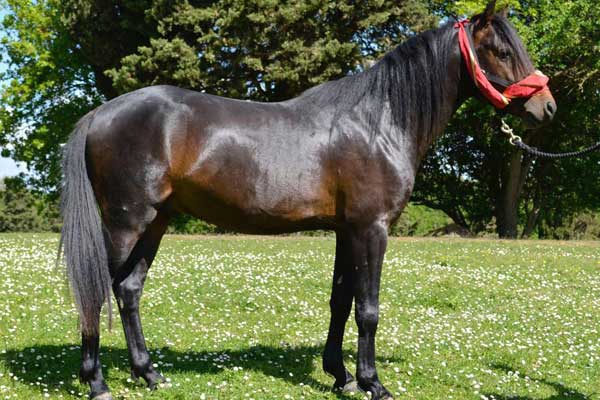The studies confirmed that the analysis of phenotype has utility and potential for investigations of phylogeny in species where there may be a paucity of information from the genetic base. BioscienceHorizons Volume 6 2013 10.1093/biohorizons/hzt010
Submitted on 2 January 2012; accepted on 9 August 2013
© The Author 2013. Published by Oxford University Press.
S.A. Brown1,*, M.J.S. Moore-Colyer1,2, and D. Hannant1,3
1The Open College of Equine Studies, 29 Pages Lane, Higham Estate, Bury St Edmunds, Suffolk, IP28 6NJ, UK. 2The Royal Agricultural College,
Cirencester, Glos GL7 6JS, UK. 3School of Veterinary Medicine and Science, University of Nottingham, Nottingham LE12 5RD, UK.
*Corresponding author: Sheilagh Anne Brown, Leafywood, Overton Bush, Jedburgh TD8 6RW, UK. Tel: +44 01835 840659.
Email: sheilaghbrown2008@hotmail.co.uk
Project supervisor: Dr Meriel Moore-Colyer, Royal Agricultural College, Cirencester GL7 6JS, UK.
Project supervisor: Professor Duncan Hannant, School of Veterinary Medicine and Science, University of Nottingham LE12 5RD, UK
Abstract
Although genetic analyses suggest that the Skyrian pony is unrelated to other breeds, it shares some physical features with Exmoor ponies, thought to originate in the primitive pony referred to as Pony Type 1, and the Caspian horse, thought to be descended from Horse Type 4. To test the hypothesis that the Skyrian shares the Exmoor’s origin in Pony Type 1, comparisons were made of defined physical characters and morphometric measurements amongst Skyrian ponies, Exmoor ponies and Caspian horses.
The average mean character differences were 0.56 ± 0.12 between the Skyrians and Exmoors, 0.43 ± 0.15 between the Skyrians and Caspians and 0.83 ± 0.06 between the Caspians and Exmoors.
This approximates to reports comparing other horse breeds and breeds in other species, confirming that the Skyrian is a distinct breed.
Using two-way analysis of variance (ANOVA), Friedman’s ANOVA and post hoc tests, no significant differences were found between Skyrians and Caspians in the eye, neck, body and limb shape (P = 1.000) nor shoulder angle (P = 0.222) nor in the ratios of body length:elbow height, neck length:neck circumference and heart girth: height to withers.
However, there were significant differences (P < 0.001) between Skyrians and Exmoors for these physical characters and ratios.
While significant differences existed between Skyrians and Caspians in cephalic profile, parietal crest and tail placement (P < 0.001) and there were similarities between Skyrians and Exmoors in these physical characters (P = 1.000 or 0.098), overall the Skyrians appeared phenotypically closer to the Caspian, but unrelated to either breed.
This investigation enabled the evaluation of a methodology comprising systematic, comprehensive investigations of phenotype, with data reduced and analysed by appropriate statistical methods, to clarify equine breed ancestry and phylogeny.
The studies confirmed that the analysis of phenotype has utility and potential for investigations of phylogeny in species where there may be a paucity of information from the genetic base.
Moreover, this approach has been shown to support and augment knowledge derived from studies based on genetic testing and provide a cost-effective and easily performed method of determining relatedness amongst equine breeds.
Key words: phenotypic variation, evolution, phylogeny, ancestry, horse

